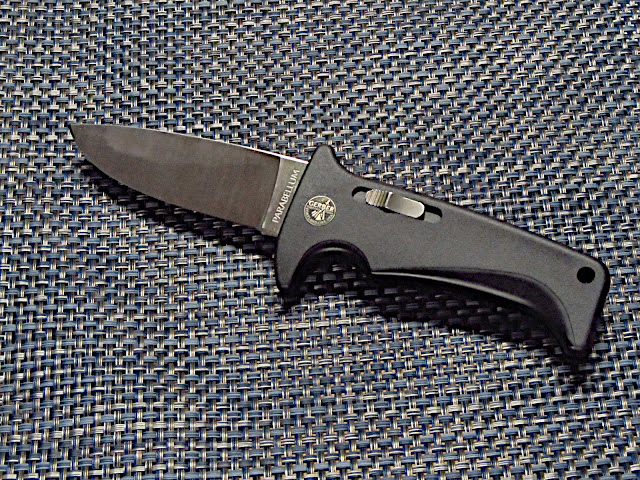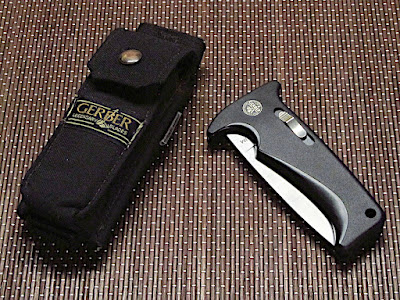 |
| Gerber Parabellum: Prepare for war |
The Gerber Knife Company has a funny origin story. It’s not secret but I find it amusing. It's not about making knives, it's about selling knives.
It’s
1939, Hitler fires the opening shots of WWII.
A few Americans are concerned.
Leo Szilard and Albert Einstein draft a letter to President Roosevelt about
the potential to build an atomic bomb and advising him to create and fund a
government research project on nuclear weapons.
Joe
Gerber owns an advertising agency in Portland Oregon that has been in his
family since 1904. Christmas is coming
and Joe wants to give special presents to his best customers. He has David Murphy, a local knifemaker,
craft 24 knives.
Somewhere,
somehow Abercrombie and Fitch get their corporate hands on one and they want to
sell them.
Joe,
knowing advertising and business, starts Gerber Legendary Blades by ordering
more knives from David. Eventually David
and Joe separate and my source claims David Murphy, despite his fame, dies
bankrupt.
Over
the years Gerber has employed craftsmen who went out and established names for
themselves. Both Pete Kershaw and Al Mar
left and started their own companies.
It
is reasonable to say Gerber started the knife business in Oregon. Over the years Gerber bought knife designs
from a list of Who’s-who in the knife industry.
The list includes Bob Loveless, Blackie Collins, Fred Carter, Ernest
Emerson, Bear Grylls, and local hero Rick Hinderer.
 |
| The Parabellum is not a pocket size knife |
In
1987 the Finnish company Fiskars bought Gerber Legendary Blades. Fiskars is essentially a holding company whose
main business concern is owning significant portions of other profitable
companies. Fiskars also owns the classic
British company, Waterford Wedgewood, who is themselves a holding company. Let’s not go down that rabbit hole.
From
1987 to 1994 Gerber made the Parabellum aka Black Bolt. It was engineered to be one of the stoutest
folding knives ever made. And if you
ever handled one, you would believe it.
It is reported that Blackie Collin designed the Bolt Action, the mechanism used to lock the knife open.
It takes a little force to unlock the blade. That isn’t always a bad thing.
I
ran into this one and despite the shadow on the back of the blade I bought
it. The edge looks factory and it comes
with the duty belt clip. The pouch can
be reconfigured so the Parabellum can be slipped into it with the blade open like
a sheath knife.
 |
| Discoloration on back of blade |
The 4-inch flat grind drop point blade is over an inch and a quarter at the widest point and 11/64 of an inch thick. The steel is probably 440C, the best of the 400 series. At the time 440C was premium mid-level steel for knife making.
440C
stainless contains:
C 0.95-1.2%
Cr 16-18%
Mn and Si at
1% each,
Mo 0.75%
The steel is magnetic so keep it away from your compass
if you’re navigating by map and compass.
 |
| Gerber Parabellum and original sheath |
I think my Parabellum was carried and never used. The pouch shows a little rust on the back
snap and the cover snap seems to have been thumb polished. The discoloration on the back of the blade appears
to be confined chiefly to the portion of the blade not protected by the knife
handle. The handle itself doesn’t have a
mark or scratch on it.
 |
| Back of Sheath It can be unsnapped and rotated to a drop leg sheath to hold the open knife |
I’m going to leave it the way it is.
No comments:
Post a Comment